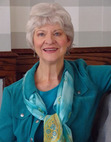Heidi M. Thomas's Blog, page 25
May 10, 2011
Are You a Mother Hen?
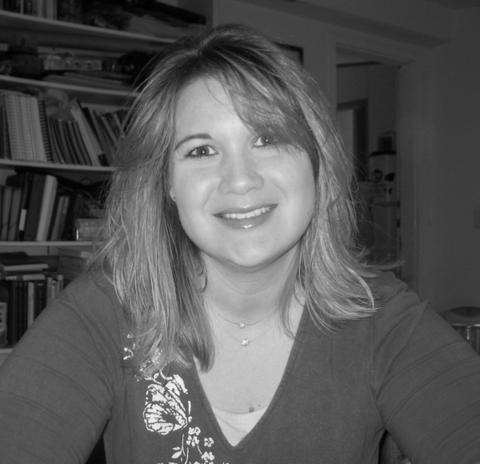 Today I went for a mile walk around my neighborhood with my son and dog, Taz. We were doing well until Taz decided he could not walk anymore and started chewing at his leash. At first I did what any dog owner would do . . . I chocked up the leash and started encouraging Taz to keep walking. At about the half way point, Taz sat down and refused to take another step. Now, I could have done what most don trainers tell you to do . . . pull the dog along and make him walk. But I didn't. I went right into mother hen mood. I picked up my dog and began to carry him the remaining half mile to our house.
Today I went for a mile walk around my neighborhood with my son and dog, Taz. We were doing well until Taz decided he could not walk anymore and started chewing at his leash. At first I did what any dog owner would do . . . I chocked up the leash and started encouraging Taz to keep walking. At about the half way point, Taz sat down and refused to take another step. Now, I could have done what most don trainers tell you to do . . . pull the dog along and make him walk. But I didn't. I went right into mother hen mood. I picked up my dog and began to carry him the remaining half mile to our house.
After I got home, I sat down at my computer and posted about our walk on Facebook. Then I turned to my WIPs. The ones I have been working on for a little over a year now. Then it hit me. I am treating my WIPs like my dog!
Okay, so you are wondering how in the world are my WIPs like my dog.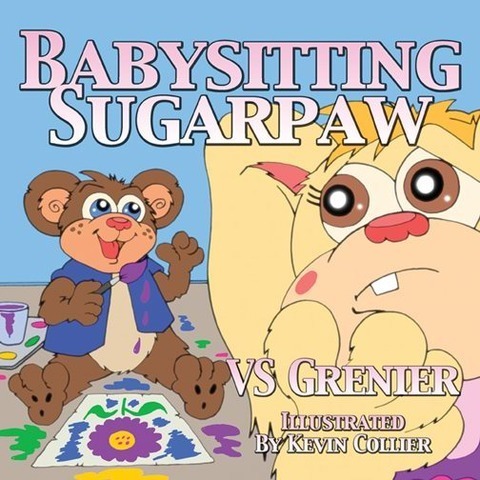 Well, they both give me comfort, but that's not what I'm talking about. No, what I am talking about is how once my WIPs get too tired, unsure of themselves, or lose their way, I pick them up and carry them around in my mind. I make up excuses as to why they are not ready to be sent out. Just like the excuse, I gave on Facebook about my dog needing to lay off the peanut butter and jelly sandwiches.
Well, they both give me comfort, but that's not what I'm talking about. No, what I am talking about is how once my WIPs get too tired, unsure of themselves, or lose their way, I pick them up and carry them around in my mind. I make up excuses as to why they are not ready to be sent out. Just like the excuse, I gave on Facebook about my dog needing to lay off the peanut butter and jelly sandwiches.
What I realized today is I am afraid to let my WIPs go. I am afraid their not ready for an editor, publisher, or agent's eyes to look them over. Does it mean my WIPs are not ready to be sent out? Maybe, but most likely not. In truth, many writers do this. They work on a manuscript trying to perfect it. Trying to make it the best manuscript ever written, but the fact is . . . you will never see that day! Why?
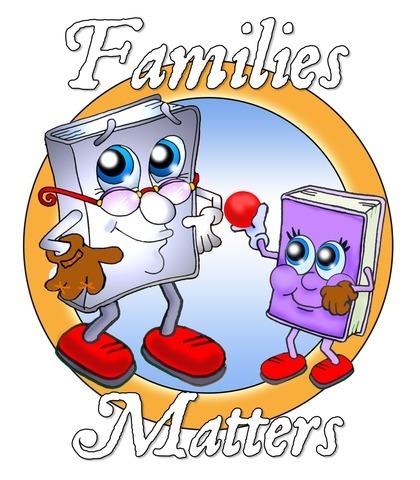 Because all manuscripts will be a WIP until they are published. This means they will go through many more revisions, edits, and rewrites before a publisher will put them on the printing press. It means once you've had your manuscript critiqued, proofread, revised, critiqued again, revised some more . . . you need to find the right time to send it out into the world. To let your baby fly with its own wings. You may get some rejections and some may even be helpful to help you prefect your WIP a bit more. But if you do not set your manuscript down and let it walk on its own feet, it will never be strong enough to walk the whole mile to publication.
Because all manuscripts will be a WIP until they are published. This means they will go through many more revisions, edits, and rewrites before a publisher will put them on the printing press. It means once you've had your manuscript critiqued, proofread, revised, critiqued again, revised some more . . . you need to find the right time to send it out into the world. To let your baby fly with its own wings. You may get some rejections and some may even be helpful to help you prefect your WIP a bit more. But if you do not set your manuscript down and let it walk on its own feet, it will never be strong enough to walk the whole mile to publication.
So stop being a mother hen. Let your manuscripts leave your arms and take flight! Or in the case of my dog, Taz . . . walk. Virginia blogs at Families Matter and her book is available from Amazon
Virginia blogs at Families Matter and her book is available from Amazon








May 5, 2011
The First Line Hook
 I love to pick up a book and read the first line. Sometimes they really are a "hook," set to reel me into the story. Writing gurus tell us we need to do that, especially when submitting to agents and publishers, because if they're not compelled to read beyond the first line, your manuscript will find its way into the rejection file rather quickly.
I love to pick up a book and read the first line. Sometimes they really are a "hook," set to reel me into the story. Writing gurus tell us we need to do that, especially when submitting to agents and publishers, because if they're not compelled to read beyond the first line, your manuscript will find its way into the rejection file rather quickly.
Sometimes they stay with me…for weeks, months, even years. My all-time favorite is "The last camel collapsed at noon" from Ken Follett's Key to Rebecca. Our writing group once did an exercise using that sentence as their opening line. The results were fascinating. Every story was different.
Another one I especially like is "The man with ten minutes to live was laughing." (Frederick Forsyth) That's a line that makes you wonder, why is he laughing when he's about to die? I want to know!
And then there is "I stopped shooting people two weeks after I won the Pulitzer Prize" from Dead Sleep, by Greg Iles. Again, makes you think.
The writing gurus also tell us we need to introduce our character, set up our story problem, give the reader an idea where the story is taking place and include conflict. (So, how many words are we allowed in one sentence?)
 We get the impression that the bigger hook, the more extreme, the better. But if you have a dynamite first line and the rest of the page doesn't live up to it, you've defeated your purpose. It could be misleading. I loved the opening line I came up with for my first novel: "Nettie Brady should've been born a boy." But I received several critiques wondering if my character had gender-identity issues. I knew Nettie was a girl who loved riding her horse more than anything in the world, but that first sentence didn't get the idea across as well as I'd hoped. So I scrapped it.
We get the impression that the bigger hook, the more extreme, the better. But if you have a dynamite first line and the rest of the page doesn't live up to it, you've defeated your purpose. It could be misleading. I loved the opening line I came up with for my first novel: "Nettie Brady should've been born a boy." But I received several critiques wondering if my character had gender-identity issues. I knew Nettie was a girl who loved riding her horse more than anything in the world, but that first sentence didn't get the idea across as well as I'd hoped. So I scrapped it.
The February 2011 issue of Writers Digest Magazine has an excellent article by Jacob M. Appelt, "Better Starts for Better Stories." Appelt outlines several ways to begin, including start late (don't set up the scene, begin with the action), use minimal dialogue, try several different options, and revisit the beginning when you reach the end. Sometimes the story has changed so much that you'll want an entirely different opening line.
Appelt lists his favorite opening as "My mother had me sort the eyes" from Elizabeth Graver's short story "The Body Shop." Now that's a grabber!
What is your favorite first line "hook?"








April 30, 2011
Auction to Benefit Diabetes Research
Since 2005, New York Times bestselling author, Brenda Novak, has been hosting an on-line auction to benefit diabetes research, last year raising $303,000. The auction will run May 1 – May 31st, but not all items will be open all month, so look for the ending times!
Each year, she offers a fabulous prize package to the person who places the most bids over all (even if that person doesn't end up paying for a single item.) This year that package will include:
A brand new laptop computer (a MacBook or comparable PC).
An autographed copy of INSIDE (which won't be available to the general public until July 28th).
FREE admission to FAN 2012, the reader appreciation party/weekend getaway I do in conjunction with NYTimes Bestselling Author Christine Feehan, which will be March 2 – 4 in 2012 (learn more at www.fanconvention.net).
A surprise goody box of other fabulous items.
You can bid here on my books, Cowgirl Dreams and Follow the Dream, and other women's stories.
You can search here to see what other fabulous items there are to bid on.








April 26, 2011
Malakh: Of Angels and Demons
 This week, my guest blogger is Sharon Gerlach, who has just published a paranormal novella, Malakh, and is on her way across cyberspace on her vitural blog book tour.
This week, my guest blogger is Sharon Gerlach, who has just published a paranormal novella, Malakh, and is on her way across cyberspace on her vitural blog book tour.
by Sharon Gerlach
"A great flame follows a little spark." – Dante Alighieri.
I used this quote in a novel I wrote in 2008, and for some reason it's stuck with me; I guess because it can be applied to so many situations. In my book, I used it in reference to the start of an amazing lifelong relationship.
In writing, that spark can be an incredible journey of words, a wondrous well of ideas that sets fire to the imagination and leaves in its wake not ashes, but prose lovingly crafted and meticulously researched.
I can pinpoint exactly when I fell in love with the paranormal: my mother watched this certain movie several times when I was very small—the title escapes me; I think it was called Ghost Story—and one part still stands out in my memory to this day. The young couple in the movie had a figurine on their coffee table, and at one point when they walked out of the room, murmured words and cries could be heard from the little statue.
It gave me chills. My flesh prickled into goosebumps. I was afraid to go to sleep. I was wary of figurines. My stomach filled with anxious swooping sensations when I thought of that part.
I loved it! And from that moment on, I was hooked.
My first story wasn't penned until the sixth grade, and by then I was firmly entrenched in the adoring ranks of paranormal junkies. My father was the projectionist at the Air Force base theater where we were stationed, and the siren song of scary movies was more than I could resist. Likewise, my book collection was populated with titles from leading paranormal and horror authors. That irresistible love of all things unexplainable found its way into my first story and almost one every after it.
Got a good vampire story? I'm there. Werewolves? Even better. But the best of the best, the crème de la crème, the most chilling of the paranormal, is the unseen world that interacts with ours, most of the time without our even being aware of it. And why is it the best? Because unlike vampires and werewolves, the angelic realm is real. What could be more chilling in fiction than something that could actually happen?
Last year we watched the movie Paranormal Activity. For those who don't know, it's about demonic torment and possession, told from the viewpoint of a webcam and a handheld camcorder. It's not an action-packed thriller and the spooky parts were quite understated until the very end. But I literally did not sleep well for a month and a half, and my fear of the dark—always just barely held at bay anyway—was large and in charge for several months, because it was so realistically presented…and I believe it can happen.
 My belief in the unseen realm around us is rooted in my deep-seated faith, and even though my paranormal stories are secular, that faith seeps in and insists that I keep things true. When I sat down to write Malakh (my novella about angels just released on April 8 ) I didn't have a specific supernatural being in mind. It wasn't until I had defined the main human character, Suzanne, that I was able to determine what I needed from my antagonist: cunning, superior knowledge, superior abilities—but he couldn't be invincible.
My belief in the unseen realm around us is rooted in my deep-seated faith, and even though my paranormal stories are secular, that faith seeps in and insists that I keep things true. When I sat down to write Malakh (my novella about angels just released on April 8 ) I didn't have a specific supernatural being in mind. It wasn't until I had defined the main human character, Suzanne, that I was able to determine what I needed from my antagonist: cunning, superior knowledge, superior abilities—but he couldn't be invincible.
Angels lent themselves nicely to the task. While they have knowledge humans might not, they aren't all-knowing, and while they are stronger than humans, they are not invincible. People believe in them, tend to accept them more easily than they would a vampire or a werewolf, which heightens the suspense and the awe of the story. Their first appearance in my work was long before Malakh, and Malakh won't be their last performance.
In the meantime, I watch countless movies and read countless books about the paranormal—many about angels, delving into Bible scripture and commentary to keep them as true—and as chilling—as they can possible be.
The great flame is my lifelong love of the paranormal, started by the spark of a single eerie movie when I was a toddler. I'm happy for the opportunity to make you turn on all the lights in your house, and make your skin pucker into goosebumps.
*****
Bio
Sharon Gerlach spent her early childhood bouncing across the United States as the youngest daughter of an Air Force sergeant. Settled in the Pacific Northwest since 1975, there's nowhere she'd rather live. Indeed, she's so determined to stay that she's crammed her tiny urban house with so much stuff that it would be too expensive to move.
Sharon lives in eastern Washington State with her husband, two of her three children, her infant granddaughter, seven cats, and a fat, lazy Border Collie.
Share Sharon's writing life on her Blog
Malakh can be purchased at Smashwords, Amazon, and Amazon UK.








April 24, 2011
Easter Blessings
April 19, 2011
Stories of the Old West Lawmen, Arizona Rangers
 My guest interview today is with John McLaughlin, author of Our Time in the Sun and the new sequel, Red Sky at Morning. Both books are historical accounts of an Old West group of lawmen, the Arizona Rangers. John is retired from a 30-year career in law enforcement with the U.S,. Forest Service, National Park Service and the Bureau of Land Management.
My guest interview today is with John McLaughlin, author of Our Time in the Sun and the new sequel, Red Sky at Morning. Both books are historical accounts of an Old West group of lawmen, the Arizona Rangers. John is retired from a 30-year career in law enforcement with the U.S,. Forest Service, National Park Service and the Bureau of Land Management.
John, your books are based on an Old West group of lawmen, the Arizona Rangers. Tell us a little about your background.
I retired after a thirty year career in law enforcement with the U.S. Forest Service, National Park Service, and the Bureau of Land Management. My career occurred primarily in the Southwest where I became an experienced Law Enforcement Ranger, wildland firefighter, farrier, and animal packer. My wife and I have been married thirty-seven years and we live in Peoria, Arizona, as well as part of the year on our property located south of Silver City, New Mexico. Currently, I work for the Arizona Division of Forestry as a member of the Arizona All Hazard Incident Management Team responding to wildland fires and other emergency management incidents throughout the state.
What motivated you to write your first book on this subject?
Well, my dad lived in Arizona shortly after the political demise of the Arizona Rangers, and he spoke fondly of this legendary band of lawm en while I was growing up. Later, in my law enforcement career, I worked in many of the same border areas of the state that the old Rangers frequented. I couldn't help wondering what it must have been like for them working as law enforcement officers in a time long, long ago. After my retirement, one of my main goals was to research the old Rangers and write a historical novel about them.
en while I was growing up. Later, in my law enforcement career, I worked in many of the same border areas of the state that the old Rangers frequented. I couldn't help wondering what it must have been like for them working as law enforcement officers in a time long, long ago. After my retirement, one of my main goals was to research the old Rangers and write a historical novel about them.
Have you always liked to write?
Yes, very much so. I belonged to the Quill & Scroll organization in high school and enjoyed writing for the high school yearbook. While in college, I majored in Wildlife Management and of course the ability to write reports and research papers was essential. During my law enforcement career, incident report writing and the ability to prepare criminal investigative case reports for prosecution was paramount.
Are any of your characters based on real people?
Yes. Many of the characters in both novels are actual Arizona Rangers, Territorial Governors, politicians, and outlaws of that era. Most of the gunfights and major incidents the characters in the novels are involved in were actual incidents that I researched. Interestingly, in my research I found very little about the personal lives of these legendary men. And so, I created fictional characters to intermingle with the historical ones. Then I assigned these fictional characters backgrounds, love interests, family, etc.
What was the very first book you remember reading and loving? What made that book so special?
My mother had all six of us kids reading about virtually everything at an early age. We didn't have a TV in the house until I was in high school. For that I am now thankful. I have thoroughly enjoyed reading almost every book I have ever picked up. The most memorable and still enjoyable today is Shepherd of the Hills by Harold Bell Wright. The beautiful descriptions of the Ozark Mountains, depictions of the life and culture of the mountain folks in late 19th century, and the exciting story line he presented so enchanted me. Wright was a master at creating interesting, believable characters with whom the reader can relate and interact.
What authors or books have influenced your writing?
There are so many and from varied genres, but within the western genre I would say the following: Zane Grey (I read all of his novels as an adolescent), A.B. Guthrie, Jr. (Big Sky, The Way West), Tony Hillerman, Elmer Kelton, Jack Schaefer, to name a few. Most recently, my wife and I have become fans of Arthur Upfield, a remarkable author, who wrote murder mysteries set for the most part in the outback of Australia.
Tell us about your publishing experiences with both books and why you made decisions you did.
 Initially, after completing my first novel, I contacted numerous agents and publishers, who quite frankly weren't interested in new authors. It seems to me they still prefer veteran authors who are well known with no or very little less risk for them in the publishing business. This is a sin of the times! A small independent publisher became interested in the first novel and published it for me. They were very honest and easy to work with; however, independent publishers do not market your book for you as the large traditional publishers do. This particular publisher went out of business two years ago during the Recession that we are all still dealing with, and I decided to self publish both the original book and its new sequel. My son, who is an artist, had already produced the art work for both covers, and I employed him to do the graphic design work necessary for the printer. Obviously, I still have to do all my own marketing which takes critical time away from my writing. But my wife and I enjoy the travel and interaction with other authors and fans.
Initially, after completing my first novel, I contacted numerous agents and publishers, who quite frankly weren't interested in new authors. It seems to me they still prefer veteran authors who are well known with no or very little less risk for them in the publishing business. This is a sin of the times! A small independent publisher became interested in the first novel and published it for me. They were very honest and easy to work with; however, independent publishers do not market your book for you as the large traditional publishers do. This particular publisher went out of business two years ago during the Recession that we are all still dealing with, and I decided to self publish both the original book and its new sequel. My son, who is an artist, had already produced the art work for both covers, and I employed him to do the graphic design work necessary for the printer. Obviously, I still have to do all my own marketing which takes critical time away from my writing. But my wife and I enjoy the travel and interaction with other authors and fans.
Are you working on another book?
Yes. I'm pretty well done with the initial draft manuscript of In the Shadow of the Mountain, a novel set in the early 1970s about a Vietnam veteran who returns home from the war and works for the U.S. Forest Service in the Gila Wilderness in New Mexico. Hoping to find peace and tranquility, he quickly becomes embroiled in murder and deceit. I'm hoping to have it completed soon this year and contract HEIDI THOMAS to edit it as she did with my first two novels.
Thank you, John. What is the hardest part of this whole process for you?
Without a doubt, the marketing is the most difficult part. I have limited experience in marketing although I'm getting somewhat better at it, and I just don't have the time and money that is essential for getting the job done well. And I believe all the time spent marketing would be better served in writing.
Besides your writing and all associated commitments, what do you like to do in your free time?
I like to read books first and foremost, and work on our five acres in New Mexico. I enjoy camping and hiking with my wife and the company of our two dogs. I like to shoot as often as I can and ride horse back. I am actively involved working as a volunteer with two organizations here in Arizona.
If we were to make a movie of your life, who would you cast to play you?
I would be honored if Denzel Washington would be so kind! My wife and sons think Sam Elliott would be a shoe-in!
Where can we find your books?
From my website: www.johnmclaughlinbooks.com or on-line with amazon.com, Barnes and Noble.com.








April 13, 2011
The Grandmother Who Flew as a Dragon
My guest today is Franses Hermann of Missoula, Montana, author of The Grandmother Who Flew as a Dragon, a delightful fantasy children's book.
 Where did your dragon stories come from?
Where did your dragon stories come from?
Originally I started telling stories to my grandson Sean when he was very little. He was only a few years old, and like a lot of little boys, very interested in dragons. We used to take long walks, and he would point out various places where he thought a dragon might hide, and I would tell him about that particular type of dragon living there. Several years later, when his younger sister Rhyan was born, the stories became longer, and after I had my cardiac death it was suggested I should write. That is when I started to embroider a little on the basic tales and write them down.
Tell us a little of your background, where you came from, and if you've always been a storyteller.
I was born in Rotterdam, Holland's largest harbor. There I lived for the most part in various foster homes until my mother came and picked me up, She had rented an apartment in a Jewish neighborhood and we lived there together till I turned six. I did not do well in school, and mother was not doing too well financially. Besides, Rotterdam was under attack continuously. Mother packed up a few of our belongings and we went up north to stay with my grandmother. It did not last either, so we went off to the Hague and moved into the same boarding house where my sister lived at the time. It was a bad experience for me, and was glad when we found a small little rowhouse and moved again. When I was eight, my father was back in the picture. We moved one more time before we made the big move back to my mother's neck of the woods.
The Grandmother Who Flew as a Dragon is your first in a series. Are you working on a second book?
I am working on book two, wherein the second dragon head tells of his life as a horse in Ireland. Book three goes back to Rhyan, who is now a college student, while Sean is living in his grandmother's cabin.
How did you find your publisher, Stoneydale Press?
When we (The Montana Writers Guild) did our first anthology, I was the one checking out various options and Stoneydale was one of them. I like Dale (Burk), and knowing that I would not be able to handle the business end, I chose him when I wanted to self-publish the book.
What do you do to market your book?
I wish I could say I have had a high pressure campaign going. I have done some readings. I am very good at reading, and have been told that I have a pleasant voice to listen to. I wish I could do an audio book.
Have you written in any other genre besides children's stories?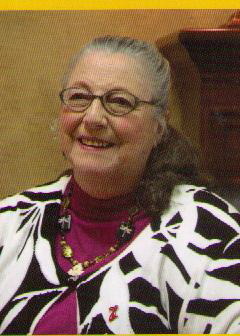
I am writing my memoirs, and have written some stories where the center point is a run-down bistro that I bought on a trip back home. I had a short story, "Hometown" published in the Montana Writers Guild anthology, A Blend of Voices.
Why do you like writing for children?
I love children, and have always been able to place myself in their world.
What advice would you give authors who want to write for children?
I am hardly in a position to hand out advice, but one thing people must understand, that is more difficult to write for children than for adults. Children know a phony when they hear or read one.
I see that the cover art was done by your niece. Is she a professional artist?
Yes, my niece, who lives in Amsterdam, is an artist. Check her out on the web. Ella Gersteling.








April 8, 2011
The Soggy Town of Hilltop
Today we welcome Kevin McNamee, who will be talking about his children's picture book, The Soggy Town of Hilltop.
Kevin McNamee is a writer and poet living in Yonkers, NY. He primarily writes for the children's market. Kevin's published work includes the picture books, If I Could Be Anything, The Sister Exchange, Lightning Strikes, The Soggy Town of Hilltop and What Is That Thing?
Kevin's poetry has been published in the collection, An Eyeball in My Garden: And Other Spine-Tingling Poems. Other titles coming soon by Kevin include My Brother, the Frog, Papa's Suns, Just for Today, and more.
Kevin, what is this book about?
The High Council of Hilltop gets bored, so they decide to start making up rules for their own amusement. The latest rule demands that people drink water by pouring it on top of their heads. The townspeople try to drink water this way, but are not very successful at it. It takes a child to inform the townsfolk exactly how silly this new rule is.
What message are you trying to convey in this book?
Sometimes, following the crowd isn't the best thing to do. People need to think for themselves. Being that this book contains advanced concepts; the age range is listed as 4 through 10. As children attend school and participate in other activities outside the home, they are bound to be exposed to peer pressure and other outside influences. This is an excellent time to educate children about these pressures and to give them the tools and guidance so they can make good choices.
Do you think this book can help children with that?
I believe it does. I tried to use an extreme and funny example to illustrate a problem that could easily solved by independent thinking. During book readings and school visits, children have always able to recognize what the problem is in the story. Like the main character in my story, children come to the conclusion that this situation isn't right. With this realization, children express why it isn't right, and draw parallels to situations in their own lives.
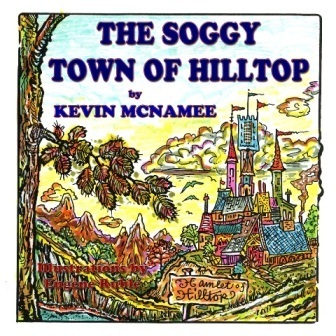 Is it hard to write a picture book?
Is it hard to write a picture book?
A picture book may be short, but it is by no means easy. It still has to have all of the elements of a longer story. I need to pay attention to plot, dialogue, pacing, character development, etc, all while using the least amount of words possible. When I'm writing a rhyming picture book, it adds another level of difficulty to the process. I have to consider rhyme and meter as well as all the other elements of a story. It's quite a juggling act, but when it all comes together, the extra effort is worth it.
Is there anything else that you would like to add?
I think that when children learn to think for themselves, they are more likely to make good choices. I may use humor to talk about this issue, but I think it is a very serious concept for both children and adults.
I had a lot of fun writing this book, so I hope you have just as much fun reading it.
The Soggy Town of Hilltop by Kevin McNamee, Illustrations by Eugene Ruble
Print ISBN 13: 978-1-61633-041-5
eBook ISBN 13: 978-1-61633-042-2
"You want us to do what?!!!"
This fun, rhyming picture book teaches more than just a new way to drink water.
The High Council of Hilltop wants the people to learn a new way to drink. But when the people find out why, everyone has something new to learn.
This book is available as a print book, a downloadable e-book, and a book on CD from guardianangelpublishing.com at http://www.guardianangelpublishing.com/soggy-hilltop.htm.
Books are also available at amazon.com.
You can also find this book and others by Kevin at , or ask your local bookstore.
What Others Are Saying
The Soggy Town of Hilltop is a funny, rhyming story by Kevin McNamee…What I really like about The Soggy Town of Hilltop is that McNamee spells out the lesson in the end for readers. There isn't any second guessing as to what the point is. Like one of Aesop's fables, the moral of the story is in plain sight. The illustrations in this one are equally funny and beautiful. Eugene Ruble does such an excellent job of bringing a story to life with his artwork. –
***
Told in amusing rhyme, children's author Kevin McNamee will have the reader laughing out loud and wondering how people would follow ridiculous rules so blindly. Coupled with the unique illustrations by Eugene Ruble, The Soggy Town of Hilltop will soon be a must have for our young muses. – Reviewed by Donna M. McDine for The National Writing for Children Center.
***
Rather than teaching us a new way to drink, The Soggy Town of Hilltop illustrates the danger, and sometimes even the stupidity, of bowing to peer pressure, something that both youngsters and adults should remember. – Home School Book Review
***
This is a fun, rhyming story that teaches young readers just because somebody tells you to jump off the Brooklyn Bridge, it doesn't mean you have to and Eugene Ruble's illustrations give the story a classic fairy tale feel, sure to become a bedtime favorite. – Examiner.com
To find out more about Kevin, please visit his website at or visit his blog at .
You can also find Kevin on at .
Kevin is also on Linked-In and Twitter, but he admits that he doesn't tweet much.








April 1, 2011
What a Character!
 As readers, don't most of us enjoy identifying with a main character of a story, finding someone we can cheer on, even crawl into their skin for a vicarious adventure? I know I do. Characters in our stories are human beings—readers want them to seem like real people. So we have to get to know them as well as we know ourselves. Even those of you who are writing memoirs or family history—it's going to be a lot more engaging and readable if the people you're writing about seem three-dimensional. Developing such a character is one of the most important elements of writing and can be one of the hardest.
As readers, don't most of us enjoy identifying with a main character of a story, finding someone we can cheer on, even crawl into their skin for a vicarious adventure? I know I do. Characters in our stories are human beings—readers want them to seem like real people. So we have to get to know them as well as we know ourselves. Even those of you who are writing memoirs or family history—it's going to be a lot more engaging and readable if the people you're writing about seem three-dimensional. Developing such a character is one of the most important elements of writing and can be one of the hardest.
I read a lot of books and often, as soon as I go on to the next, I'll forget about the plot of the one before. But I love it when I discover a compelling character that stays with me long after I finish. Edward in 600 Hours of Edward by Craig Lancaster is such a character. He is a middle-aged man with Aspergers disorder who keeps a log of the minute he awakes each morning, records the high and low temperate, eats the same thing for lunch and dinner every day, and every night at 10 p.m. sharp, watches videos of Dragnet (in a certain order). Such a description of a character might make you think it would be a rather boring story. But Edward is such an endearing character, with the cares and hopes and dreams we all have, that I found myself cheering him on toward each small step of normalcy.
Here's a fun four-sentence exercise to introduce your characters to yourself:
1. Introduce a character (age, sex).
2. Bring character home to dwelling place
3. Greet someone in the home, tell something about the mood of the char.
4. Move character out of room (off camera).
What did you learn about this character? It's amazing what he or she will tell you in four sentences! Start out each character like this to find out about him/her. Fill in the information and find the emotional connection.
What are some key elements a compelling character should have?
The ability to care. What does your character care about? What is the goal? Edward cares that his father doesn't seem to love him. This element of caring sets the character up in how he/she is going to live life, how he's going to react to certain things. Giving your character something to care about commits her to a stance to live by.
 Conflict. We have to challenge him, threaten her and what they care about. Throw the character into a situation that challenges what he cares about and threatens the thing he feels is important. A precious collection is stolen. A girl enters a dangerous relationship. You create risk. This doesn't always have to be through a villain—it can be weather, hard times, a moral dilemma, friction between the characters. The twists and turns of your plot will come from these things. In my book, 14-year-old Nettie cares very deeply about her family, but wants to ride in rodeos so badly she is willing to risk ostracism and a wrecked reputation as well as broken bones.
Conflict. We have to challenge him, threaten her and what they care about. Throw the character into a situation that challenges what he cares about and threatens the thing he feels is important. A precious collection is stolen. A girl enters a dangerous relationship. You create risk. This doesn't always have to be through a villain—it can be weather, hard times, a moral dilemma, friction between the characters. The twists and turns of your plot will come from these things. In my book, 14-year-old Nettie cares very deeply about her family, but wants to ride in rodeos so badly she is willing to risk ostracism and a wrecked reputation as well as broken bones.
Motivation is what causes the character to act. Is it to save his own life? Someone else's he cares about? To preserve her reputation? The reasons relate to the character's inner character. Something drives him to rescue the kidnapped child, slay the dragon, challenge the alien invaders, or track down the mass murderer.
 Motivation often comes from a desire for change. Give a character so compulsive a desire to make a given change that he can't let it be, and you have the basis for a story. And your character MUST change. It doesn't need to be huge, it can be subtle. It can be a character's struggle with addiction, mid-life crisis—trying to get out of a rut, a change in attitude toward something or someone. Readers don't examine stories looking for the motivational aspects. However, they instinctively know when they aren't there. They'll know the story is flawed and will stop reading.
Motivation often comes from a desire for change. Give a character so compulsive a desire to make a given change that he can't let it be, and you have the basis for a story. And your character MUST change. It doesn't need to be huge, it can be subtle. It can be a character's struggle with addiction, mid-life crisis—trying to get out of a rut, a change in attitude toward something or someone. Readers don't examine stories looking for the motivational aspects. However, they instinctively know when they aren't there. They'll know the story is flawed and will stop reading.
Donald Maas, a New York agent, in his book, Writing the Breakout Novel, emphasizes that your character must be "larger than life:"
Take Strong Action. Do what we in real life wouldn't do— Act in ways that are unusual, unexpected, dramatic, decisive, full of consequences and are irreversible.
Show strength to overcome the problems and conflicts he's thrown into. What makes characters appealing is not their weaknesses, but their strengths, not their defeats but their triumphs—how they overcome their setbacks.
Inner conflict—striving to attain the seemingly impossible. Struggle is more compelling than satisfaction. Example: Scarlett O'Hara longs for the solid comfort of Ashley Wilkes, but who is the great love of her life? The roguish Rhett Butler.
Self regard—emotions matter, he/she learns from them. Allow your character to measure himself—How have I changed/ What caused that change? Do I long to return to my old way of feeling, or am I determined never to go back to that frame of mind again?
Wit & spontaneity—shock, sting, snap your character awake with humor or a reaction you wouldn't dream of, i.e. tell off your boss, spit in your father's face, drive a car into a ditch just to scare the daylights out of your date, slap a man you later sleep with.
Transformation—a character in trouble has sympathetic qualities. He's aware he's in trouble, tries to change. Readers need reasons to hope.
Character Qualities: Things that give a lasting & powerful impression of a character: Forgiveness and Self Sacrifice—what is the character willing to give up to achieve a goal?








March 24, 2011
Women's History Month: The Strong, Independent Women in My Life
I have a great legacy of history from my grandmother and my mother.
My grandmother was a true cowgirl. She was not famous like Alice and Margie Greenough, Prairie Rose Henderson or Bonnie McCarroll, but she did ride steers in rodeos in the 1920s and '30s, and she was an avid horsewoman. I like to say that I believe she was more at home on the back of a horse than behind a dustmop. Her life was hard, enduring the social stigma of rodeo cowgirls, who were considered "loose women" because they dressed like men and traveled around the country with men, competing with men. She and her family also endured the drought and Great Depression of the 1930s, at one point trailing their herd of horses from Northern Montana to Salmon Idaho, looking for grass to feed them.
 I admire her "cowgirl attitude" (to do the hard thing, the right thing and not whine about it) and it is something I've tried to live by.
I admire her "cowgirl attitude" (to do the hard thing, the right thing and not whine about it) and it is something I've tried to live by.
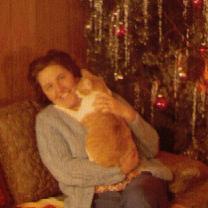 My mother was not a cowgirl, but she knew how to "cowgirl up." She was a courageous woman who came to the "wilds" of eastern Montana from Germany after World War II to find a better life. She was a nurse and my dad met her while serving in the Army as part of the American Occupation in Germany. When he returned to the States, he wrote and asked her to come to Montana and marry him. She said yes, and then it took two years before she could wade through all the red tape and paperwork to get here. I've often thought about how difficult it must have been to immigrate to a new country, learn a new language, new customs, come from an urban setting to an extremely isolated rural area, where people still considered Germans "the enemy," and where she knew no one except a man she hadn't see for two years!
My mother was not a cowgirl, but she knew how to "cowgirl up." She was a courageous woman who came to the "wilds" of eastern Montana from Germany after World War II to find a better life. She was a nurse and my dad met her while serving in the Army as part of the American Occupation in Germany. When he returned to the States, he wrote and asked her to come to Montana and marry him. She said yes, and then it took two years before she could wade through all the red tape and paperwork to get here. I've often thought about how difficult it must have been to immigrate to a new country, learn a new language, new customs, come from an urban setting to an extremely isolated rural area, where people still considered Germans "the enemy," and where she knew no one except a man she hadn't see for two years!
I've had two novels published based on my grandmother's life: Cowgirl Dreams and Follow the Dream, and I am working on a third. The fourth book in the series will chronicle my mother's courageous journey.
I don't feel like I've had to draw on the same well of courage that my grandmother and mother did, and I can only hope that I'm leaving something of note for my nieces and nephews.
Autographed copies of Cowgirl Dreams and Follow the Dream are available from my website http://www.heidimthomas.com They are also available from my publisher, Treble Heart Books http://www.trebleheartbooks.com/SDHeidiThomas.html as hard copy books and e-books. Follow the Dream is available on Kindle.
My blog is http://heidiwriter.wordpress.com




















